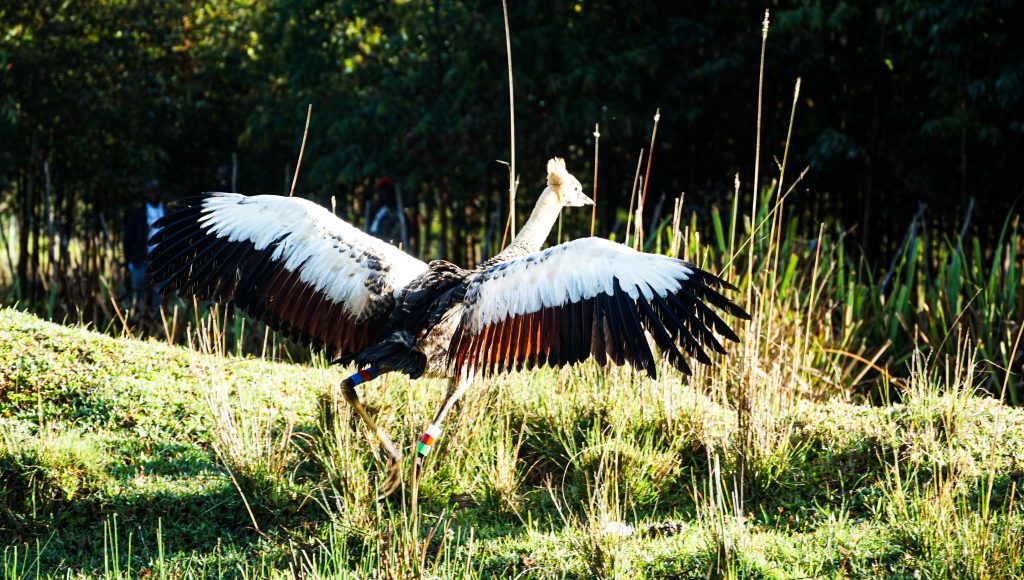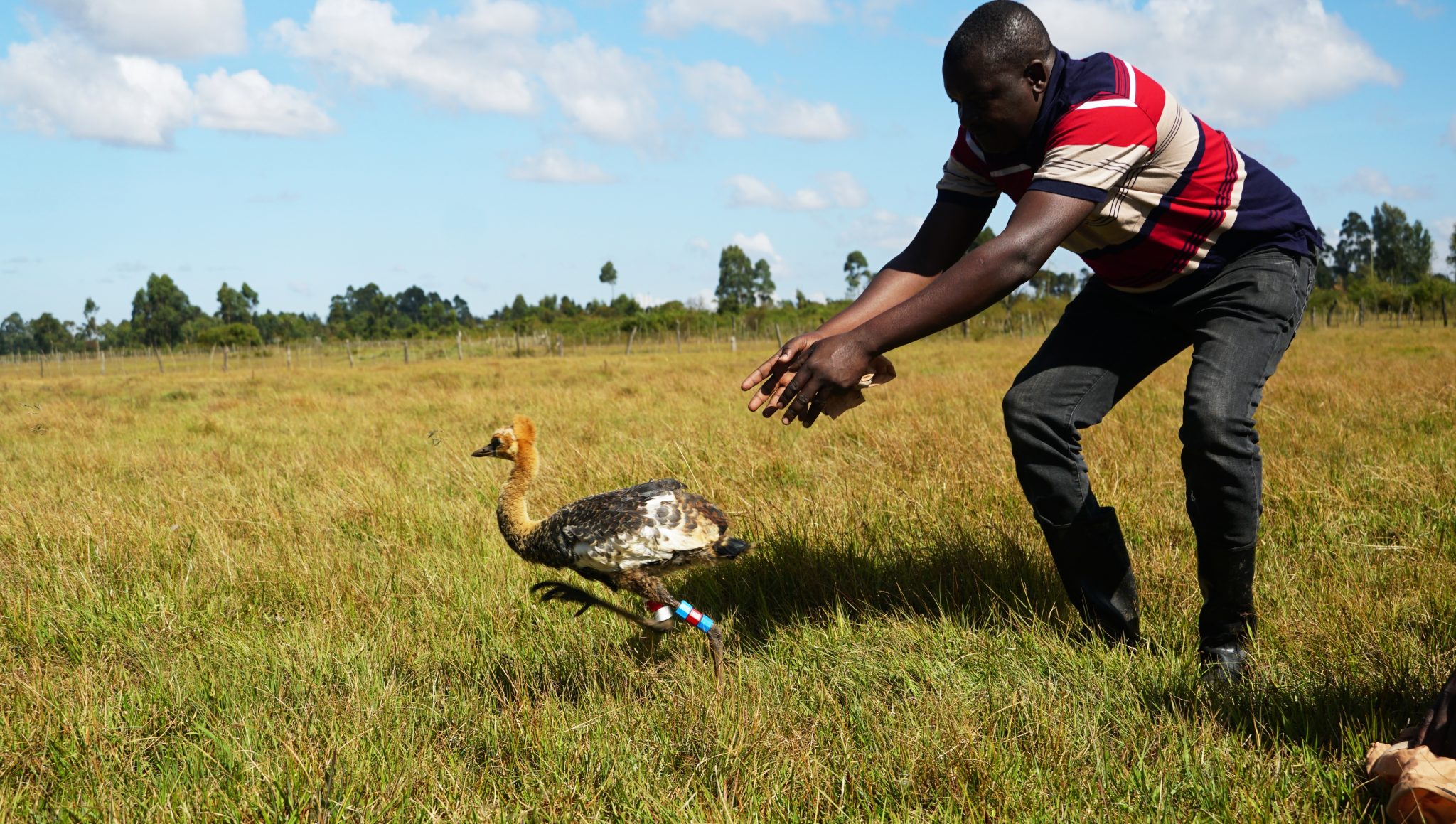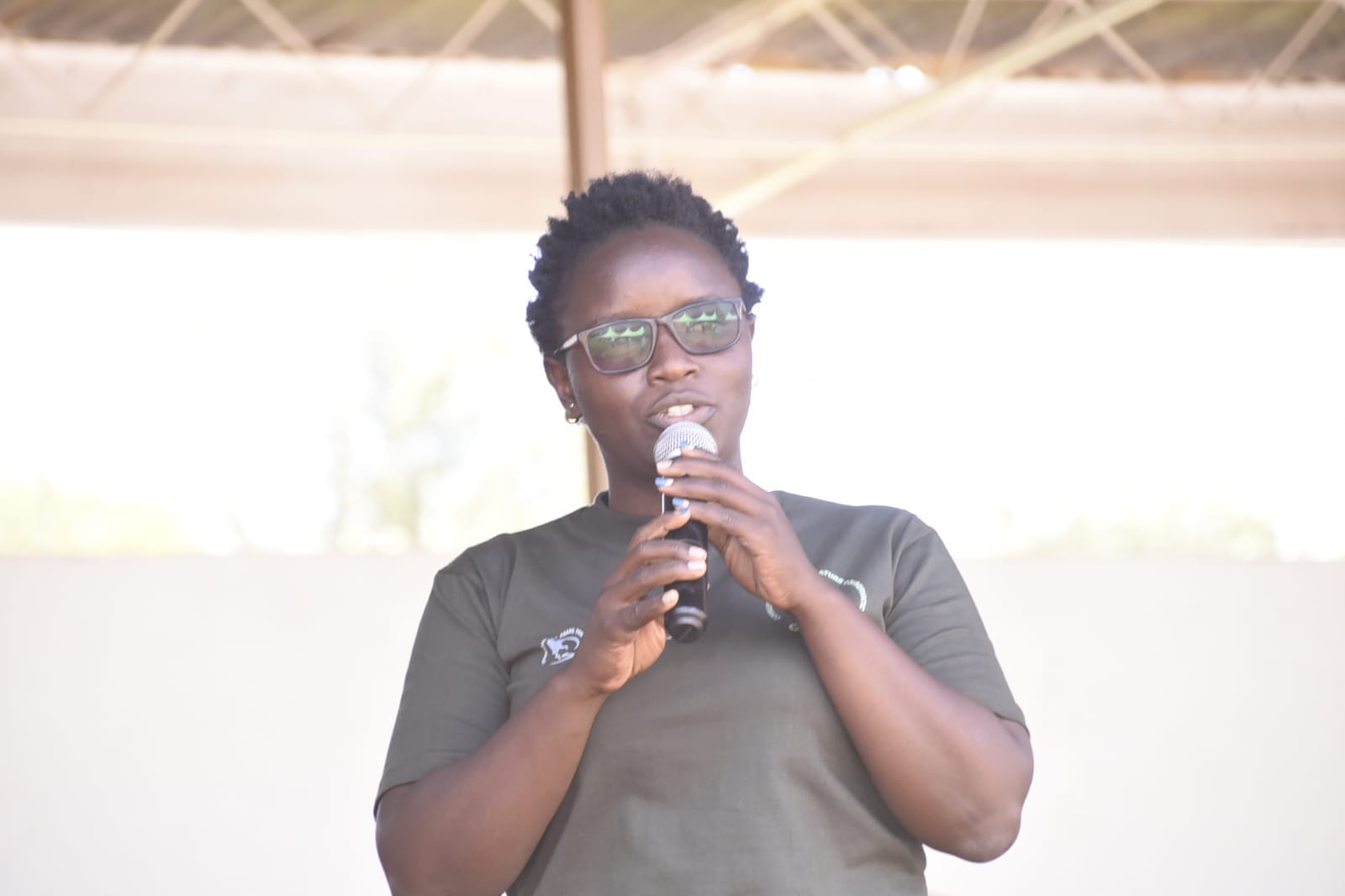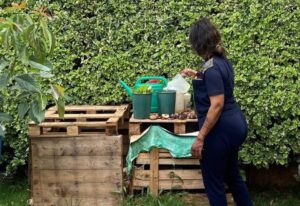Sharp Decline in Crane Population;Wetlands Degradation on the Rise

A ringed crane chick that is among 7,800 crane population currently available in Kenya/Photo James Gitaka
International Crane Foundation (ICF) in collaboration with Endangered Wildlife Trust (EWT) and Community Action for Nature Conservation (CANCO) has been conducting a crane ringing exercise for the endangered species in Several Counties in Western Kenya Nandi, Transnzoia and Uasin Gishu among others.
The exercise targeted crane chicks aged 10-14 weeks old.
“Today we are conducting one of our routine activities which is Crane banding and ringing.” Said Maurice Ogoma, East Africa Research and Monitoring Specialist
Ringing is done to the crane chicks for various reasons, among them monitoring the movement and activities of the birds’ e.g. How long they live and when and where they move. Furthermore, ringing aids in collecting the bird’s bio-metrics that includes the wing size, tarsus length and weight among others and we also identify the various threats they face, to answer questions that are vital for the species conservation. These activities are done in conjunction with Kenya Wildlife Services (KWS) and the National Museums of Kenya (NMK) Ornithology Section.

Maurice Ogoma, East Africa Research and Monitoring Specialist releasing one of the ringed crane chicks/Photo James Gitaka
“We do ringing to monitor the movement of cranes. We want to establish their movement patterns and establish their breeding success and survival rates amid the challenges they face in their breeding and feeding areas. Ringing also helps us in various research activities that would help us further understand and ascertain the biology and ecology of the cranes. For example, we collect bio-metrics of the chicks including their age, length of the head, wings and tarsus, and their weight so as to understand their growth dynamics over time.” Remarked Dr. Maurice Ogoma
With this being an activity that requires proper planning, the field team begins work around May. This begins with monitoring the birds and their movements, locating their breeding sites and watching them for up to 10 – 14 weeks before ringing can be done.
A worrying trend in the number of cranes has been their decline which Dr. Ogoma notes has been witnessed around the East Africa region. This has resulted in the Grey Crowned Crane Species being endangered thus their inclusion in the International Union for Conservation of Nature (IUCN) Red List as an endangered species.
“We did the last crane census in Kenya in 2019, which was a National census and we came up with approximately slightly more than 7,800 cranes all over the country. This to us we feel is quite a low number compared to the figures in 2015 when the National crane population was estimated to stand at between 10,000 to 12,500 individuals.
Like any other living organism, cranes face challenges because of the various human activities. Encroachment by farmers into the wetland areas which are the birds breeding places, poisoning, and illegal trade being part of the challenges threatening the cranes survival hence their dwindling numbers.
“One of the key challenges facing cranes includes agricultural encroachment on the wetlands due to climatic and weather changes that has forced farmers to cultivate on the wetlands that are the birds breeding sites, incidental poisoning of cranes because of conflict with farmers who perceive cranes to feed on grains and shoots of crops especially after planting, electric power line collisions while flying around and direct persecution. Lack of awareness and illegal trade whereby their eggs and chicks are collected from the wild for sale and domestication are also some of the challenges being faced. “Concluded Dr. Ogoma.

Vivian Kitui of the International Crane Foundation (ICF) notes that there is need for more awareness on the need to conserve the East Africa Grey Cranes that are on the verge of extinction.
“The East Africa Grey crane is only found in Kenya , Uganda ,Rwanda among few East African Countries, it’s a beautiful bird , that has been used as an emblem for a Number of Institutions such as Nairobi University ,it is also found in the Ugandan Flag and therefore it’s a rich heritage that should be conserved for future generations” Said Kitui.
Kitui further challenges the county governments and relevant government agencies to ensure conservation of wetlands that are a key breeding site for the birds.
Agricultural Activities in one of the Wetlands within Uasin Gishu County, Most of the Wet lands have been degraded/Photo James Gitaka

The International Crane Foundation (ICF) will be joined the rest of the world in marking the Wetlands Day that is observed to recognize and celebrate the importance of wetlands to the world, and the diversity of life that they support.
Wetlands can be a very small or a very large area where the land is saturated with water throughout the year.








